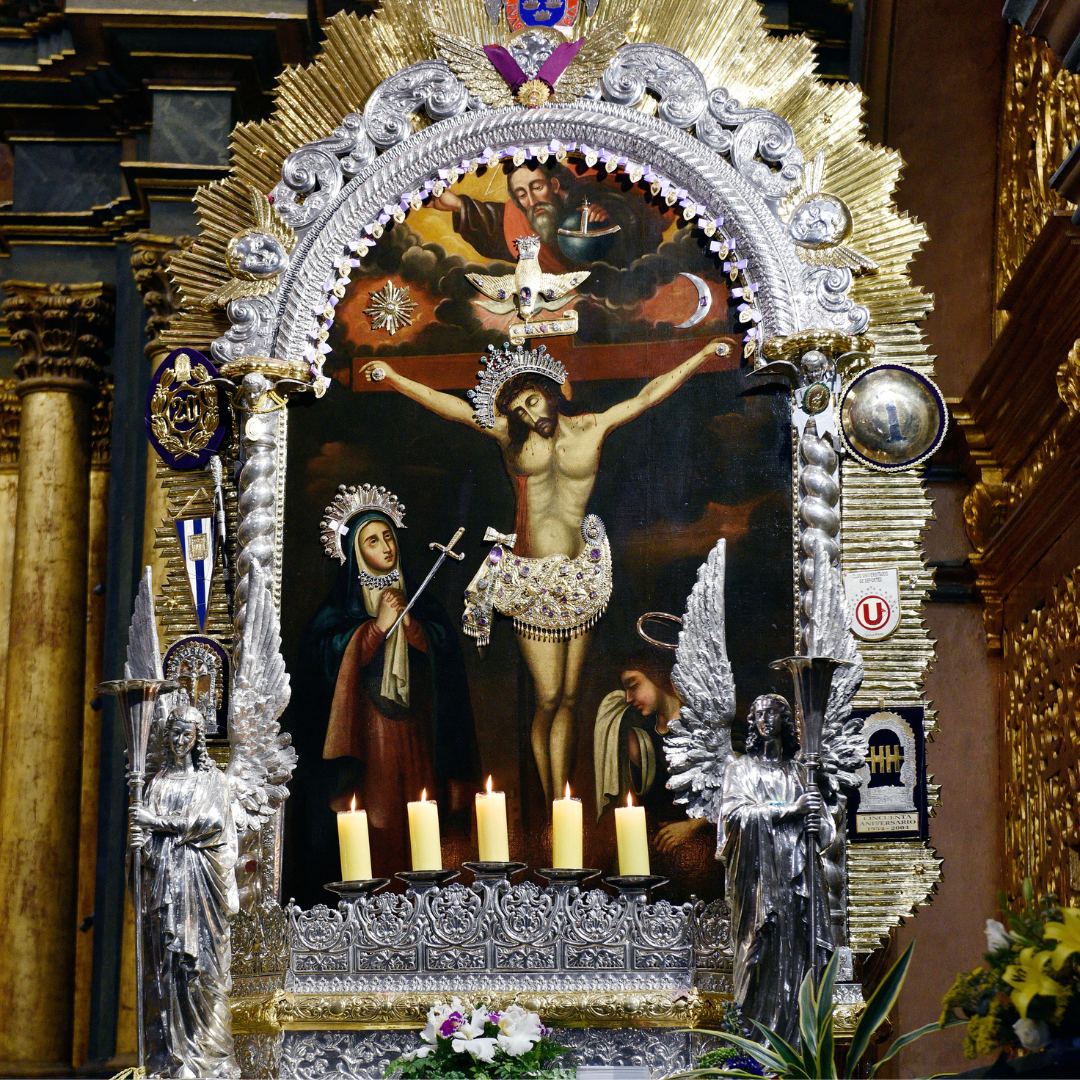You’ve heard of Mexico’s “Our Lady of Guadalupe,” but do you know about Peru’s “Lord of Miracles“?
Though it’s not as well-known outside of South America, the Lord of Miracles (or Señor de los Milagros) image is a really big deal for Peruvian Catholics. It inspires one of the largest religious processions in the world every year.
This is its amazing, supernatural story of the Lord of Miracles (Señor de los Milagros).
It all began in around 1651 on the outskirts of Lima, the most important city in Peru. An African slave painted an image of Jesus on the cross, with the Blessed Virgin Mary and Mary Magdalene, on a wall. Not much else is known about the artist. Some sources say his name may have been Benito or Pedro Dalcon, but no one knows for sure.
Just a few years later in 1655, disaster struck: a massive earthquake hit the city. Thousands of people died and whole sections of the city were leveled. There was one very notable exception though: the small adobe that had the painting in it was one of the few buildings left completely unaffected.
In 1670, a prominent resident of the city was terminally ill with some sort of brain problem. Desperate for help, he visited the image in faith and, miraculously, was healed!
Word quickly spread of the miracle, and the image became a pilgrimage site. Huge crowds gathered to see the image – and the authorities got worried. Concerned that the image was causing too much commotion, the local ruler ordered the image be covered up.
And that’s when things got really weird.
A painter was sent to scrape it off the wall. He started climbing up his ladder but was suddenly overcome with chills and a tremor. He climbed down and people nearby helped to calm him down. He tried climbing up again but had the same problem. He was physically unable to destroy the image.
A second person was sent to the image but refused to do the job when once he got close. He apparently saw something about the image that changed his mind, but he wouldn’t explain.
Losing patience for what should have been an easy task, the ruler sent a third person – this time, a trained soldier. When the soldier approached the image, the image supernaturally changed before his eyes. He later said it started gleaming and became more beautiful. As a result, he was unable to destroy it.
The crowds demanded that they stop trying to destroy the sacred image, and the local ruler finally relented. He allowed the image to remain and authorized Mass to be celebrated by it. Since then, many other miracles have been attributed to the image, hence its name.
In 1687, another major earthquake hit Lima. Again, the sacred image survived. Devotion to the image had greatly increased, so someone held a procession with the image. However, since it was impractical to process the image with the wall it was on, someone made a copy on canvas, which was used instead.
To this day, you can visit the original image on the wall at the Sanctuary of Las Nazarenas in Lima, and the copy on the canvas is still used in a procession every fall. With hundreds of thousands of participants, it is one of the largest religious processions in the world every year.
Here is the Lord of Miracles image:

Here’s the image in its current location:

Here are pictures of the yearly procession:



